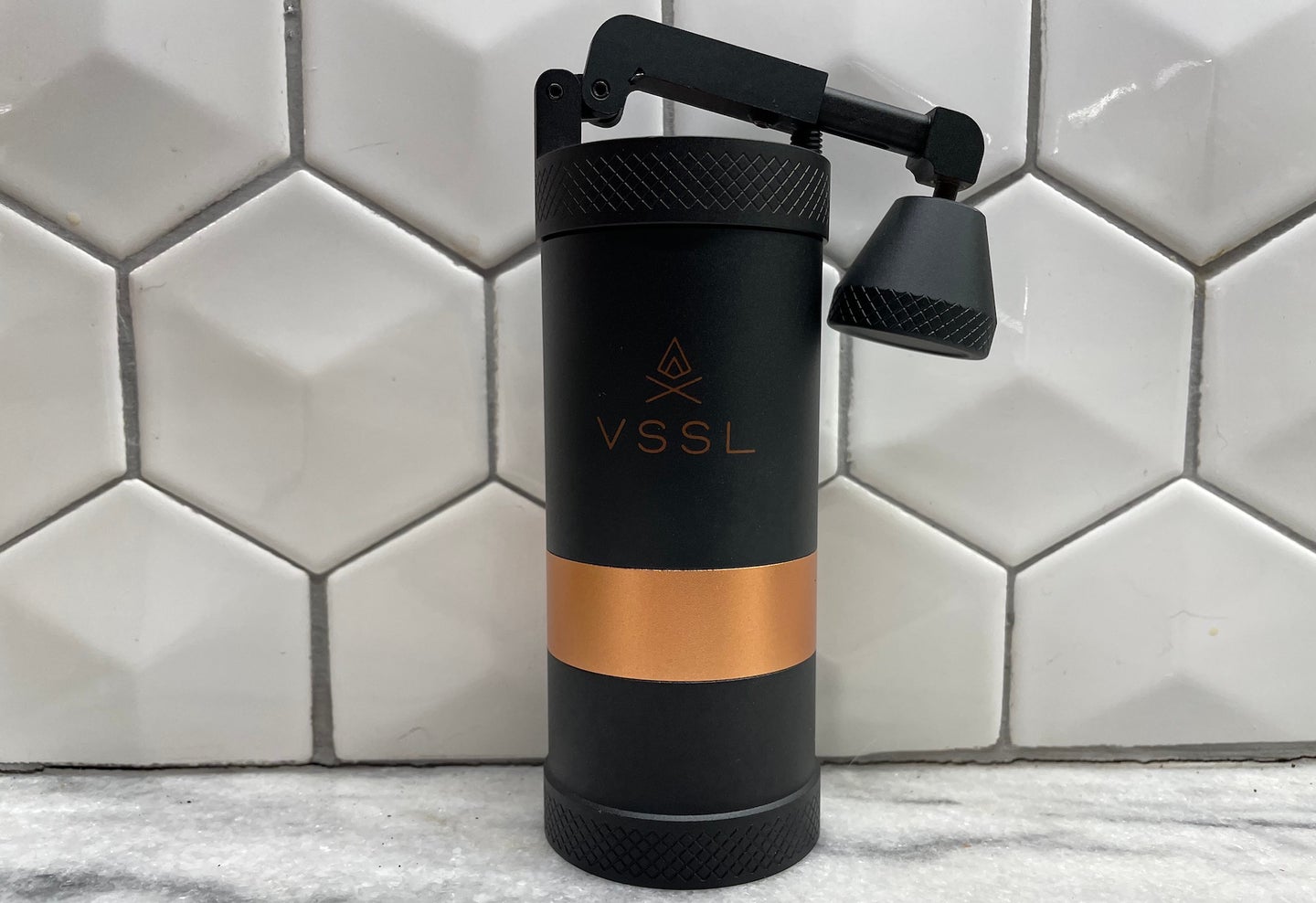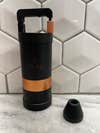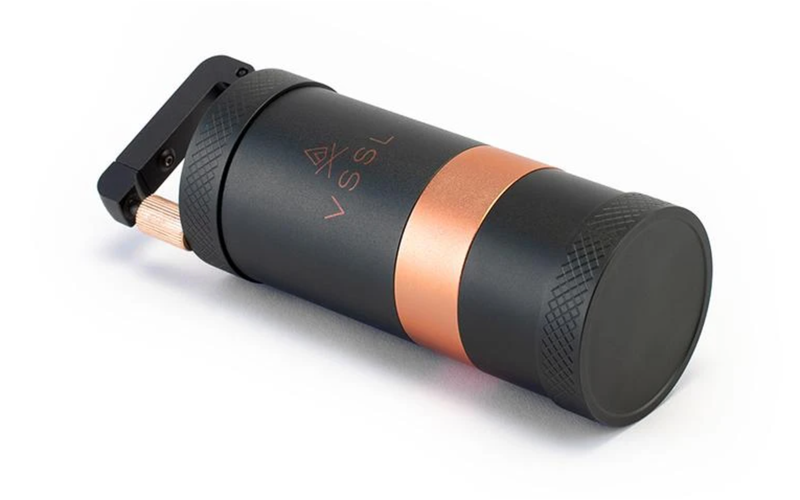Review: You won’t survive a nuclear war, but the VSSL Java coffee grinder might
This thing is a tank.

We may earn revenue from the products available on this page and participate in affiliate programs.
It’s been said that climbing mountains and hiking long distances is the art of suffering. I call it the price of admission. By hauling yourself over hills and through valleys far along backcountry trails, you get to see beautiful and remote works of nature that others aren’t capable of seeing. But with long distances and few resupply points come heavier backpacks and many decisions on what to put in them — and every ounce counts.
While I’m obsessively judicious on what I take along, one thing I never sacrifice is quality coffee in the morning. In the backcountry, as opposed to the city, I enjoy going to sleep early and rising before the sun comes up. I find a quiet zen in going through the motions of warming up my hands enough to manipulate the camp stove, heat up water, and make a great cup of coffee. I enjoy drinking it and listening to the animals around me wake up as well — especially the songbirds.
My current go-to coffee maker in the bush is the AeroPress Go, but the AeroPress only brews. It doesn’t grind coffee beans. So my editor sent me a premium coffee grinder specifically designed for outdoor use for me to check out. With an MSRP of $150 on Amazon, the VSSL Java coffee grinder is a premium model compared to other handheld grinders. Let’s lift the curtain and see how it performs.
Unboxing
The VSSL Java arrived in a wonderfully designed, attractive black, white, and orange, 100 percent recyclable fiber cardboard box with no single-use plastic (bravo!). The side panels displayed the actual size of the grinder and listed its technical specifications. The VSSL Java measures six inches tall by two inches in diameter, weighs 395 grams (13 ⅞ ounces), and has a grind capacity of approximately 20 grams. The back panel proudly claimed the VSSL can brew epic coffee anywhere and touted its ultra-durable aircraft-grade aluminum construction, signature flip-and-clip carabiner handle, 50 unique grind settings (!), and its stainless steel burr guts.

Out of the box and in hand, the quality of the VSSL Java’s construction is immediately and viscerally apparent. First off, at 395 grams, it’s noticeably hefty and reminded me of the old D battery Maglite flashlights. This feeling was more than a hunch, so I checked out the VSSL website and learned that the Java was a new addition to their product line this year and that the company’s main business is not coffee gadgets, but high-end customizable survival gear packaged in aluminum tubes that resemble large old D battery Maglite flashlight handles.
There’s an interesting story behind that. According to VSSL, owner Todd Weimer’s father died when he was 10 years old, and that’s when he started venturing further and further into the Canadian wilderness to escape, to remember, and to gain perspective. He and his childhood friend became obsessed with traveling light and carrying their basic survival gear in the smallest, most practical way. A few decades later, Todd realized that the handle of a Maglite flashlight could be used as the perfect vessel to carry essential gear. The design team at VSSL also realized that there was a need on the market for a bombproof travel coffee grinder, so they decided to build one.
And build one they did. At a $150 price point, the VSSL Java hand coffee grinder is one of the most expensive premium travel hand coffee grinders around. Let’s see how it holds up to testing.
How we tested the VSSL Java hand coffee grinder

Excellent coffee is the product of several key variables:
- Water: Considering that coffee is more than 98 percent water, you’ve got to start with pure, fresh, water. If your water tastes like chlorine, sulfur, iron, or other crap, so will your brew. The National Coffee Association recommends neutral pH water at the right temperature and volume. And the water needs to be heated to the proper temperature to extract all the goodness from the beans — between 195 and 205 degrees Fahrenheit works best.
- Fresh, high-quality, properly roasted coffee beans: Start with coffee from a reputable roaster that knows what the heck they are doing. My latest favorite is Roosevelt Coffee Roasters in Columbus, Ohio. Check them out. Roasted coffee is perishable and should be stored in a cool, dark, dry, airtight manner. Whole bean coffee stays fresh for up to two weeks while ground coffee should be used within an hour at room temperature. (The increased surface area of ground coffee speeds its staling.)
- Ratio and grind size: It’s critical to nail the right coffee to water ratio for the brewing method and grind size you are using. Typically, the longer the brew time (e.g., French press), the coarser the grind, and conversely, the shorter the brew time (e.g., espresso), the finer the grind. Check out this chart for more.
I established six basic criteria for evaluating the VSSL Java hand coffee grinder:
- Portability
- Durability
- Ergonomics/ease of use
- Capacity
- Speed
- Consistency of grind
Test 1: Portability. I carried the VSSL Java hand coffee grinder with me every time I left the house for a week. I appreciated its compactness but never forgot its heft. VSSL’s product specifications state the device weighs 360 grams (0.8 pounds), but I found the total weight to be 35 grams heavier when I weighed it on my kitchen scale, coming in at 395 grams. Apparently, the person at VSSL forgot to also weigh the conical magnetically attachable handle knob. I found the device easy enough to carry and compact enough to stow. After a week of lugging it around, I decided I’d take it on vacation or car camping, but it was too heavy for me to throw in my pack for multi-day backpacking trips. I’ll just pre-grind the coffee ahead of time and carry the grounds with me in a ziplock bag. After 20 years in the Marine Corps, I hate a heavy backpack.
Test 2: Durability. Simply put, the VSSL Java hand coffee grinder is a tank. It’s well-built out of aircraft-grade aluminum. To test its durability, I dropped it a few times on a hardwood floor from a height of six feet. I noticed no deformations to the aluminum body (or hardwood floor) and every internal part continued to spin smoothly. The handle of the VSSL screws into the cap to form a carrying loop of sorts. I did notice that when the grind selector was set to coarse, there was some travel in the cap when I pulled on the loop, but this was fixed by turning and tightening the grind selector all the way to very fine and this reduced the movement significantly. The specifications also stated that the handle has a load-bearing capacity of over 200 pounds. To test this, I rigged it from the rafters in my basement using a c-clamp, a rock climbing runner, and two locking carabiners. I then applied my 218-pound body load and, to my surprise, it held. More importantly, the interior gearing continued to function properly. Well done, VSSL.

Test 3: Ergonomics. VSSL did a good job designing the Java hand coffee grinder. Recognizing the copper-colored knurl on the handle is a bit small, they included a conical 1-1/8 inch magnetically attached handle knob to make grinding more comfortable. This conical knob can be stored inside the bottom part of the unit. Access to the coffee bean chamber is accomplished by pressing down on a spring-loaded, quick-release, copper-colored button in the middle of the top. Beans can then be loaded inside. The grind setting mechanism can be accessed by unscrewing the bottom part of the unit, and VSSL’s designers encircled the bottom edge with diamond cross-hatching to increase finger friction. The grind selector lever indexes between 50 different settings with firm, satisfying clicks. Once beans are loaded, the grinding lever can be extended an additional ¾ inch to improve mechanical advantage. Grinding the beans is relatively easy and the interior stainless steel burrs do their work — cutting the beans quickly and efficiently.
Test 4: Capacity. VSSL’s specifications state the grind capacity of the unit is 20 grams of coffee beans. This is accurate. Attempting to fill the grinding chamber with more than 20 grams of beans will prevent the lid and grinding handle from snapping back into place. Unlike the Marine Corps’ assault amphibious vehicle, there is NO room for one more.
Test 5: Speed. It took me 105 revolutions of the handle and 40.55 seconds to grind 20 grams of coffee beans. The unit provides great sensory feedback and you can easily tell when all the beans have passed through the burrs as the grinding unit begins to freewheel.
Test 6: Consistency of grind. The VSSL’s stainless steel burrs efficiently and effectively cut the coffee beans to size. The ball bearings are designed with two high-grade mini radial ball bearing sets that eliminate wobble and ensure the pressure and force you exert will apply evenly and efficiently to grind the coffee beans to the desired consistency. The VSSL has 50 settings and uses an identical vario burr set as the Timemore C2 grinder. The beauty of the VSSL is that, if you don’t nail the right grind size on the first attempt, you can always select a finer setting and send the ground beans through for another pass. Just remember, you can always re-grind to a smaller size, but you can’t add mass to already ground beans — so err on the side of larger grinds and then go finer. Bottom line: The VSSL delivered exceptionally consistent grinds — from large, chunky cowboy coffee to moon dust ultra-fine espresso/Turkish coffee grinds.

What we like about the VSSL Java coffee grinder
There’s a lot to like about the VSSL Java hand coffee grinder. First, it delivers exceptionally consistent grinds at 50 different settings. No matter your preference, you can truly dial in the right grind for the appropriate brewing method. Second, it’s built like a tank — bombproof. It held my 218 pounds of weight while swinging like Tarzan from my basement rafters. I also dropped it a few times for good measure and it continued to work just fine. Third, it’s efficient. You can grind 20 grams in 40 seconds or less. Fourth, it feels good in the hand. Fifty, it just looks cool!
What we don’t like about the VSSL Java coffee grinder
First, it’s heavy. OK, OK, I know it’s hard to build things that are both tough and light while keeping costs down. I get it. It’s a beautiful machine and functions exceptionally well, but for gram-conscious long-distance backpackers like me, it’s too heavy to go along.
Second, at $150, it will stretch the wallet of most people. Now, as my grandma said, “Ya get what ya pay for, so buy the best you can afford.” If you can afford the VSSL Java, it’s truly worth it.
Third, the unit caps out at 20 grams of capacity. For those making larger French press carafes, you’ll have to do two or three rounds of grinding — which will take about two to three minutes. It’s not a deal-breaker for me, but it is a consideration.
Verdict
The VSSL Java hand coffee grinder is a buy in my opinion. While it is on the very high end of hand coffee grinders, it works smoothly, grinds consistently, is built ruggedly, and looks cool. I recommend it for travelers, car campers, climbers, rafters, and cyclists. If you intend on hauling it long distances in your backpack over many days, you’ll want to take its weight into consideration. This is a high-end, expensive, specialized coffee grinder from a niche company built for caffeine-fueled outdoor enthusiasts.

FAQs about the VSSL Java coffee grinder
More questions? Here’s Task & Purpose’s additional brief.
Q. How much does the VSSL Java coffee grinder cost?
A. MSRP is $150.
Q. Will the VSSL Java coffee grinder fit inside of an AeroPress Go?
A. No. I couldn’t jam the VSSL Java inside the AeroPress Go handle.
Q. What else does VSSL make?
A. Their main gig is making high-end kits to store and carry your essential backcountry survival items.
Q. Joe, does it really need 50 settings?
A. Do you have a hole in your head? Of course! We are Americans and more is better. Ugh!
Got questions? Comment below & talk with T&P’s editors
We’re here to be expert operators in everything How-To related. Use us, compliment us, tell us we’ve gone full FUBAR. Comment below and let’s talk! You can also shout at us on Twitter or Instagram.
Joe Plenzler is a Marine Corps veteran who served from 1995 to 2015. He is a backcountry expert, long-distance backpacker, rock climber, kayaker, cyclist, wannabe mountaineer, and the world’s OK-est guitar player. He supports his outdoor addiction by working as a human communication consultant, teaching at the College of Southern Maryland, and helping start-up companies with their public relations and marketing efforts.

